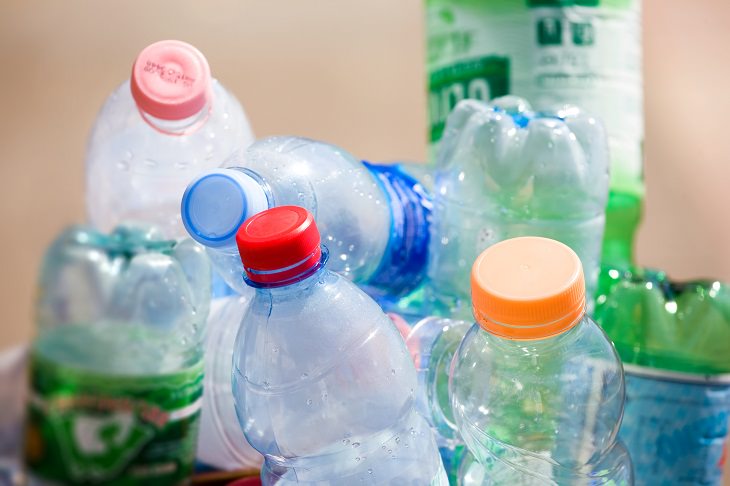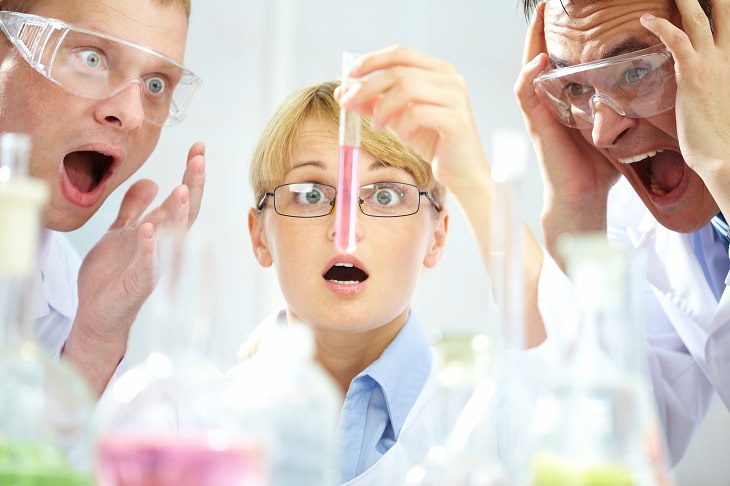
Scientists have accidentally created a mutant enzyme that breaks down plastic bottles. This major breakthrough could help solve the global plastic pollution crisis by enabling the full recycling of bottles for the first time.
This new research was spurred by the discovery in 2016 of bacterium at a waste dump in Japan that had naturally evolved to eat plastic. Scientists have now revealed the detailed structure of the crucial enzyme produced by the bug.

The international team then tweaked the enzyme to see how it had evolved, but tests showed that they had inadvertently made the molecule even better at breaking down the PET plastic used to make soft drink bottles.
The mutant enzyme takes a couple of days to start breaking down the plastic – far quicker than the centuries it takes in the oceans. However, the researchers are very optimistic that this can be speeded up even further to become a viable large-scale process.
Prof. John McGeehan, from the University of Portsmouth, UK, who led the research, says, “what we are hoping to do is use this enzyme to turn this plastic back into its original components, so we can literally recycle it back to plastic. It means we won’t have to dig up any more oil and, fundamentally, it should reduce the amount of plastic in the environment.”
Around 1m plastic bottles are sold every minute around the world and, with just 14% recycled, many end up in the oceans where they have polluted even the remotest parts, harming marine life and potentially those who eat seafood.
However, at the moment, even those bottles that are recycled can only be turned into opaque fibers for clothing or carpets. The new enzyme indicates a way that we can recycle clear plastic bottles back into clear plastic bottles, which would significantly reduce our need to produce new plastic.
The new research, published in the journal “Proceedings of the National Academy of Sciences”, began by determining the precise structure of the enzyme produced by the Japanese bug. They used the Diamond Light Source, near Oxford, UK, an intense beam of X-rays that is 10 billion times brighter than the sun and can reveal individual atoms.
The structure of the enzyme looked similar to the one evolved by many bacteria to break down cutin, a natural polymer used as a protective coating by plants. However, when the researchers manipulated the enzyme to explore this connection, they accidentally improved its ability to eat PET.

McGeehan says that “it’s a modest improvement – 20% better – but that’s not the point. It’s incredible because it tells us that the enzyme is not yet optimized. It gives us scope to use all the technology used in other enzyme development for years and years and make a super-fast enzyme.”
Industrial enzymes are widely used in, for example, washing powders and biofuel production. They have been modified to work up to 1,000 times faster in a few years, the same timescale Mcgeehan envisages for the plastic-eating enzyme. A patent has been filed on the specific mutant enzyme by the Portsmouth researchers and those from the US National Renewable energy Laboratory in Colorado.
One potential improvement that is being explored is to transplant the mutant enzyme into an “extremophile bacteria” that can survive temperatures above 70C – the point at which PET changes from a glassy to a viscous state, making it likely to degrade 10-100 times faster.
Earlier work has also shown that some fungi can break down PET plastic, which makes up around 20% of global plastic production, but bacteria are much easier to harness for industrial uses.
Other kinds of plastic could be broken down by bacteria currently evolving in the environment. PET sinks in seawater, but some scientists have conjectured that plastic-eating bugs might one day be sprayed on the huge plastic garbage patches that are floating in our oceans.
Oliver Jones, a chemist at RMIT University in Melbourne, Australia, and not part of the research team, says that “I think the new research is very exciting work, showing there is strong potential to use enzyme technology to help with society’s growing waste problem. Enzymes are non-toxic, biodegradable, and can be produced in large amounts by microorganisms. There is still a way to go before you could recycle large amounts of plastic with enzymes, and reducing the amount of plastic produced in the first place might, perhaps, be preferable. But this is certainly a step in the right direction.”